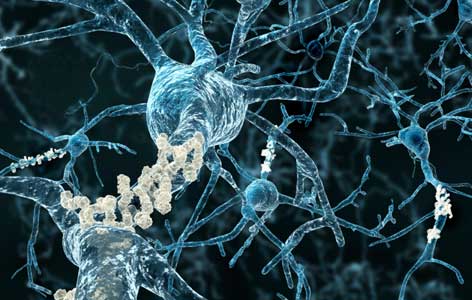
The presence of abnormal clumps of proteins (known as "plaques") within the brain is a defining feature in a number of neurological disorders, including Alzheimer disease. Identifying the proteins present in these plaques provides researchers with important molecular targets that could be used to develop new therapeutic strategies.
While advanced approaches exist that rely on mass spectrometry (MS) and standard imaging techniques to identify proteins, these methods are limited by low resolutions. As such, these models cannot be used to identify proteins located in very small, irregular or complex tissue features.
To overcome these limitations, PM Senior Scientist Dr. Avijit Chakrabartty and collaborators devised a new approach called STOMP (spatially targeted optical microproteomics). The approach combines MS with a type of imaging known as two-photon microscopy to enable very small tissue features to be analysed.
Dr. Chakrabartty's team used STOMP to isolate plaques in samples from patients with advanced Alzheimer disease and found 60 enriched proteins. The approach identified a number of proteins that had not previously been shown to be enriched in plaques. Explains Dr. Chakrabartty "We found a number of presynaptic proteins, which suggests that synapses—the regions where brain cells, or neurons, communicate—may be involved in development of the disease."
This work was supported by The ALS Society of Canada, The Alzheimer Society of Canada, the Canadian Consortium on Neurodegeneration in Aging and The Princess Margaret Cancer Foundation.
Determining composition of micron-scale protein deposits in neurodegenerative disease by spatially targeted optical microproteomics. Hadley KC, Rakhit R, Guo H, Sun Y, Jonkman JE, McLaurin J, Hazrati LN, Emili A, Chakrabartty A. Elife. 2015 Sep 29. [Pubmed abstract]




